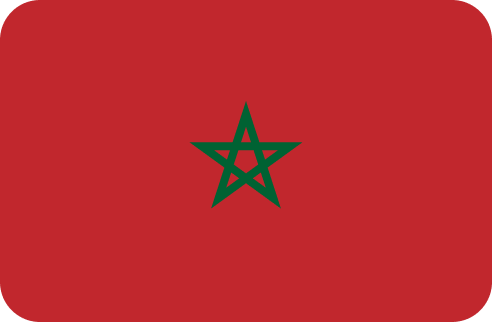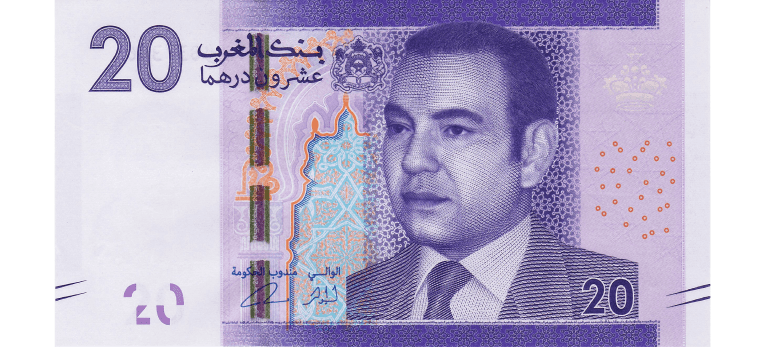Introduce país o moneda de destino:



El dirham marroquí es la moneda oficial de Marruecos y se usa en exclusiva en este país. Un dirham se divide en cien céntimos y la divisa actual de Marruecos se usa desde 1882. Su símbolo es درهم, que únicamente se expresa con la grafía en árabe.

Existen billetes de 20, 25, 50, 100 y 200 dírhams marroquíes. La actual serie de billetes tiene la imagen de Mohamed VI, el rey de Marruecos. Muchos ya se imprimen en Durasafe®, un material resistente. Estos conviven con la edición de su antecesor, el rey Hasán II, su padre.

Las monedas en circulación se acuñaron en el año 2002. Algunas de ellas son bimetálicas, como las de 5 y 10 dirhams. Además de estas, también existen las de 1, 5, 10 y 20 céntimos, y de 0,5, 1 y 2 dirhams. Todas las inscripciones del reverso y del anverso están en árabe.

Antiguamente, en Marruecos se usaban falus (monedas de cobre), dirhams (de plata) y benduqi (de oro). El dirham se mantuvo como moneda única tras la disolución del protectorado francés en 1960, aunque el dirham y el franco convivieron en el país hasta 1974.

El plural de «dírham» es «darahim», aunque en otros idiomas como el español, el francés y el inglés es común el uso de la palabra «dirhams». Esta palabra comparte raíz con la palabra griega «dracma», una de las primeras monedas de la historia de la humanidad.




*Los billetes y monedas corresponden a la serie emitida más nueva y son de referencia. Pueden variar los colores y pueden existir más diseños de los que se muestran.